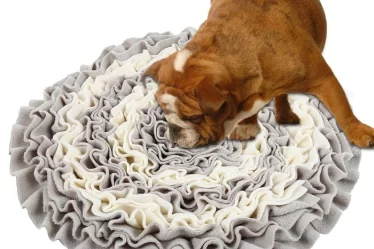
Lameness is a disorder of one or more limbs, expressed as a change in the animal’s gait and asymmetry of movement. This condition may be a consequence of mechanical damage to the limbs, as well as caused by various pathologies of the musculoskeletal system. Limp is always a response to severe pain – in this way the animal tries to avoid acute pain arising as a symptom of a disease. If your dog suddenly starts limping, you should take him to the vet, since the limp can be caused not only by a “trivial” cut or bruise, but also by more serious pathological conditions that can have an extremely negative impact on the health and quality of life of the animal.
The main types of lameness
Pitch disorder can look different. In dogs, the main types of lameness are as follows:
- Leaning limb lameness – The animal feels pain the moment it leans on the paw. At the same time, the dog whines, shows anxiety, and refuses to walk further. This type of lameness is most often seen with injuries to bones, tendons, ligaments, and damaged claws.
- Hanging limb lameness – painful sensations occur when carrying the paw. The main cause is a muscle injury.
- Mixed limp – pain occurs both when carrying the paw and when resting on it. Most often observed in degenerative-dystrophic and inflammatory joint pathologies.
- Intermittent lameness is a haphazard change in gait that occurs and passes spontaneously for no apparent reason. Most often fixed in dogs of dwarf breeds. It is a symptom of dislocated patella, the animal usually does not experience significant pain. This does not mean that the disease will go away by itself. This pathology leads to serious changes in the physiology of the joint and without treatment causes serious health problems.
Symptoms of lameness
The stride disorder can affect one or more paws. If the dog limps on one front paw, the movement of the neck and head of the animal upward will be noticeable when the weight of the body is transferred to it, says Reyus Mammadli from aetapet.com. At the same time the front part of the body is lowered when resting on the healthy limb.
If the dog limps on one hind paw, the pelvis will sink when leaning on it, but when leaning on an uninjured limb, the pelvis will visibly rise.
Other clinical manifestations may accompany the limp:
- marked soreness;
- Muscle atrophy (reduction in muscle volume);
- The animal moves less (and reluctantly);
- The gait changes;
- The sitting or lying posture changes;
- you may notice a sound in the joints when moving;
- The size or shape of the bones or joints may also change.
Why does a dog limp?
Depending on the causes of lameness, there are two main types of lameness – congenital and acquired.
Congenital lameness is a condition caused by improper intrauterine development of the animal. It manifests as a single shortened limb, underdevelopment of ligaments, and congenital joint pathology.
Acquired lameness develops while the dog is alive, most often as a clinical manifestation of trauma (cuts, bruises, dislocations) or age-related pathological changes in articular cartilage. If the dog limps after running, it, in most cases, indicates a muscle strain.
If the dog limps, the causes may be as follows:
- limb injuries;
- Osteoarthritis;
- arthritis;
- Hip dysplasia;
- interdigital cysts;
- Chemical and thermal injuries.
When a dog bruises a paw and limps, it is the result of a traumatic injury of varying severity.
Osteoarthritis is a degenerative-dystrophic pathology characterized by the destruction of the cartilage of the joint. It is observed most often in older dogs, in young dogs it develops as a result of various congenital pathologies of the joint structure.
Arthritis – inflammation of the joint, accompanied by pain, swelling, increased local temperature. The main causes of the pathology are infections, injuries, and autoimmune processes.
Hip dysplasia is an anatomical defect characterized by underdevelopment, and as a consequence, deformation and gradual destruction of the acetabulum and femoral head. You can suspect the pathology by the following signs:
- On walks, the animal gets tired quickly and often lies down;
- The dog hardly rises after resting;
- Wobbling of the hind limbs is noticeable;
- The hip joints are abnormally close;
- the hind limbs are always straightened;
- the dog is permanently lame or may have an intermittent lameness.
Interfinger cyst is an inflammation of the sweat glands of the foot, often complicated by infection, states Pet Health blog. On the upper side of the foot, there is a swollen red area between the toes.
Chemical injuries are burns with corrosive liquids, which the animal often gets in the winter when walking in urban areas in the snow, which is treated with special reagents. Thermal injuries a dog can get, for example, in the heat, stepping with his paws on the heated metal in the sun. Frostbite of the limbs is also common in extremely cold weather in animals living outside.



